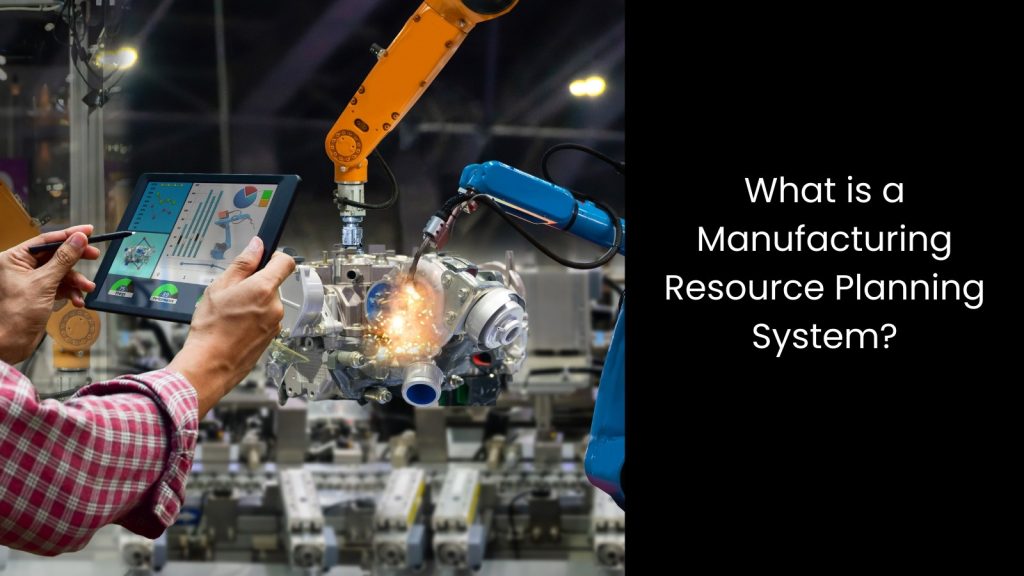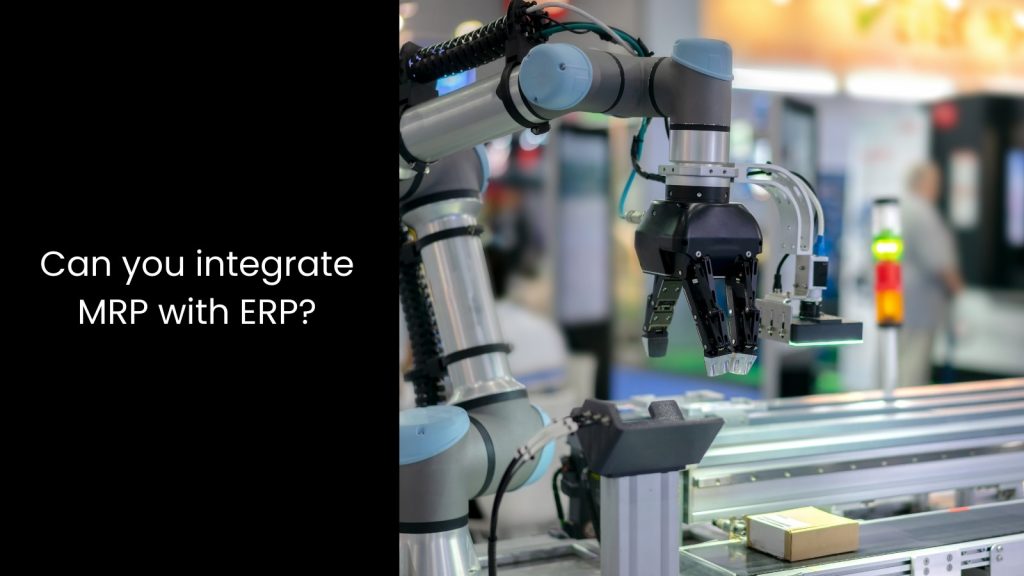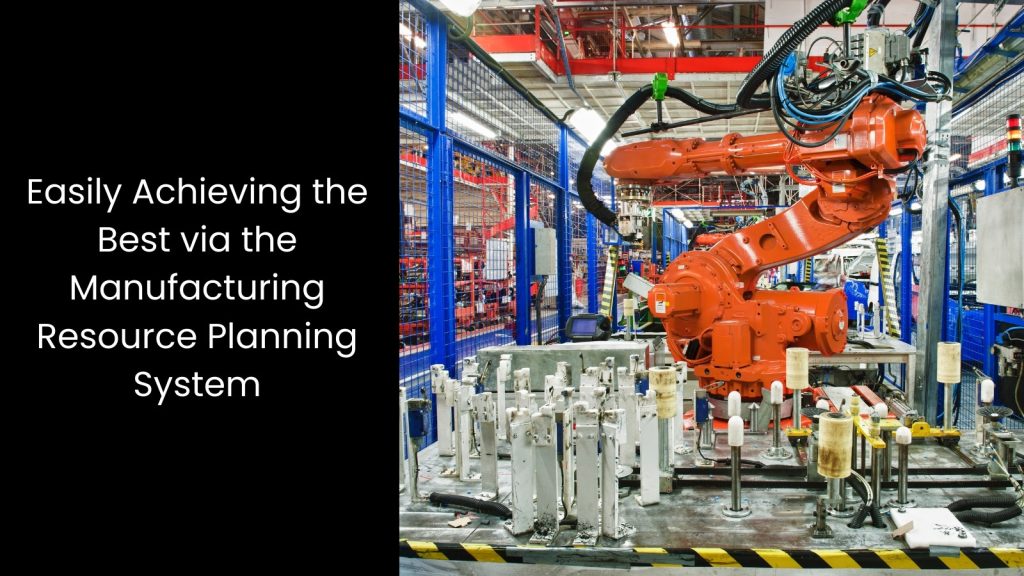Singapore is a country that gives priority to the industrial and business worlds, as they are planning to become a giant in the Asia region by 2030. This country is equipping its enterprises with every resource in order to target growth, expansion of profitability, etc. When it comes to manufacturing, Singapore is already a pioneer in this particular industry in the region. With emerging technologies, innovation, and a thirst to gain more knowledge on different technological aspects, manufacturing in Singapore keeps growing faster than expected. This is where they put a lot of weight on manufacturing resource planning.
In this article, we will explore the key reasons for opting for a manufacturing resource planning system in today’s arena.
We will know
What is a Manufacturing Resource Planning System?

- Manufacturing Resource Planning is also known as MRP in the industrial world. This is a comprehensive software system that helps manufacturing companies efficiently manage their resources, such as materials, machinery, and labour, to meet production goals.
- If we move to its core functionality, MRP calculates the materials and components needed for production based on demand forecasts, current inventory levels, and production schedules. It then generates purchase orders and production plans to ensure that the right materials are available at the right time and in the right quantities.
- MRP systems also back up the scheduling of manufacturing activities, monitor work-in-progress, and track the movement of materials throughout the production process.
- As it provides real-time visibility into inventory levels, production statuses, and resource utilisation, MRP systems encourage companies to optimise operations. These also help with minimising costs and enhancing overall efficiency, which paves the way for Singapore’s 2030 goal.
Can you integrate MRP with ERP?

- The number one question related to MRP in the Google search is whether this can be integrated into Enterprise Resource Planning (ERP) software.
- Yes, these systems can be integrated with ERP software to create a more comprehensive and interconnected solution for managing all aspects of a manufacturing business.
- The integration allows for seamless data sharing and synchronisation between the MRP modules. This focuses on manufacturing-specific functions such as inventory management, production planning, and scheduling, as well as other modules within the ERP system, including finance, sales, and procurement.
- The outstanding benefit of this integration is that it enables better coordination and visibility across the entire organisation. With this combination in place, data flows seamlessly between different departments and functions.
- This literally means that each aspect of the manufacturing framework is fully covered!
Key Reasons to Opt for the Manufacturing Resource Planning System in Singapore

Enhanced Visibility
Do you know why visibility is crucial for manufacturers?
That is because it allows them to have real-time insights into their production processes, which in turn facilitates better decision-making and operational efficiency.
Enhanced visibility is undoubtedly a key reason to opt for an MRP system. It provides manufacturers with comprehensive insights into various aspects of their operations, including inventory levels, production schedules, and order statuses, as we mentioned before.
With access to this information, decision-makers can accurately track the flow of materials, monitor production progress, and identify potential bottlenecks or issues before they escalate.
This advanced approach allows manufacturers to optimise resource allocation accurately. Not to mention that they can smoothly streamline workflows and respond promptly to changing customer demands or market conditions.
Therefore, having MRP functionality in the manufacturing ecosystem is similar to having a magnifying glass in your hands.
Cost Reduction
There is no industry that does not aim for cost reduction.
Manufacturers aim to save costs in production to remain competitive and maximise profitability. This is another key reason to opt for this type of technology, as it provides comprehensive visibility into various aspects of manufacturing operations, including inventory levels, production schedules, and order statuses.
What occurs next? No need to mention that such levels of visibility are highly useful for manufacturing decision-makers. They can identify inefficiencies, optimise resource allocation, and minimise waste throughout the production process.
On the other hand, MRP systems enable accurate demand forecasting, which helps in reducing excess inventory and avoiding stockouts. Another benefit of this is that it lowers holding costs as well.
Plus, MRP has the ability to streamline production schedules and minimise downtime. This will take away the downtime headaches from the manufacturers, and they can smoothly keep their distance from expensive machinery failures.
Optimised Production Planning
The production floor is the number one priority when it comes to the manufacturing realm.
Manufacturers need to optimise production planning to ensure efficient use of resources, which means maximum yield. Also, they need to ensure the timely delivery of products and meet customer demands.
This is where the MRP comes in.
It is quite useful for the production planning process, as MRP systems facilitate better production planning by providing accurate demand forecasts. This will back up manufacturers to align production schedules with customer orders effectively.
With MRP systems, manufacturers can forecast demand based on historical data and current market trends. The latter allows them to anticipate fluctuations in demand and adjust production schedules accordingly.
As you can see, it reduces the risk of overproduction or stockouts on the production floors. This will help optimise inventory levels and reduce lead times.
Inventory Optimisation
This fact is interwoven with the fact we discussed above.
The main reason why proper inventory management is essential for manufacturers is entirely to ensure efficient operations. Not to mention that it minimises costs and meets customer demands.
If we take manufacturing as one aspect, it heavily relies on inventory.
Therefore, this is the same reason to opt for an MRP system, as these systems provide real-time tracking and demand forecasting capabilities. This allows manufacturers to minimise excess inventory while ensuring that essential materials are always available. No need to keep the warehouses overstocked anymore.
You know that these MRP systems can analyse historical data and current inventory levels, and then they can anticipate demand to generate accurate forecasts.
By synchronising inventory levels with production schedules and customer orders, manufacturers can avoid stockouts and overstocking situations. Plus, MRP systems perform just-in-time inventory practices as well. This will allow manufacturers to minimise storage space and holding costs associated with excess inventory.
Growth in Efficiency Levels
The sole purpose of manufacturing companies opting for technology is to maximise their efficiency and productivity levels. Do you agree?
Manufacturers truly have a thirst for high levels of efficiency and productivity to remain competitive, meet customer demands, and maximise profitability.
Growth in efficiency levels is a key reason to opt for a Manufacturing Resource Planning System because MRP systems streamline processes, automate tasks, and optimise resource utilisation.
This is how it goes. As the system can integrate various aspects of manufacturing operations, including inventory management, production planning, and scheduling, it is able to eliminate manual inefficiencies and reduce the likelihood of errors.
On the other hand, since it has embedded features such as real-time data tracking and analysis, it aids manufacturers in identifying bottlenecks in the first place. This will help minimise downtime and improve overall equipment effectiveness (OEE) within the entire manufacturing line.
It is another plus point for the MRP software to have the capacity to synchronise data across departments. As a result, manufacturers can achieve higher levels of efficiency and productivity and produce goods more quickly and cost-effectively.
In manufacturing, every minute equals profitability!
Quality Management
Yes, we discussed being efficient in the above section. It is indeed important, yet producing quality products is rather important for manufacturers.
Manufacturers must maintain the highest quality standards in their productions to uphold their reputation. Then only they could satisfy customer expectations and comply with regulatory requirements.
MRP systems have a lot to do with quality management frameworks. These systems integrate quality control processes into the production workflow, ensuring adherence to rigorous standards. By incorporating quality checkpoints and inspections at various stages of production, MRP systems help manufacturers identify and address defects or deviations promptly.
On one hand, MRP systems offer traceability by documenting production processes and materials used. This will enable manufacturers to track and address quality issues efficiently.
On the other hand, by ensuring consistent quality across products, MRP systems enhance customer satisfaction and reduce rework and waste. With this functionality in hand, manufacturers can easily slip away from penalties for quality breaches.
Synchronising Processes
In the manufacturing industry, no unit can function all alone. It is a combined process, and the entire manufacturing realm needs to act as one element.
This is where manufacturers require synchronisation across all aspects of production. This is to ensure seamless workflows, minimise inefficiencies, and meet customer demands effectively.
MRP systems are powered to integrate various functions, including inventory management, production planning, procurement, and scheduling, into one platform. When synchronising these processes, MRP systems enable real-time data sharing and communication between different departments, facilitating better coordination and collaboration.
This integration ensures that production activities are aligned with demand forecasts, inventory levels, and resource availability. This will minimise the risk of delays or disruptions.
Easily Achieving the Best via the Manufacturing Resource Planning System

Since you have read our whole article, you may understand how important it is to have MRP functionality within your production framework. You can purchase an MRP system that can stand alone, or you might want to purchase an ERP system that has the integrated functionality of MRP. Whatever the choice you make, you are advised to collaborate with an industry expert who has experience in diverse technologies.






